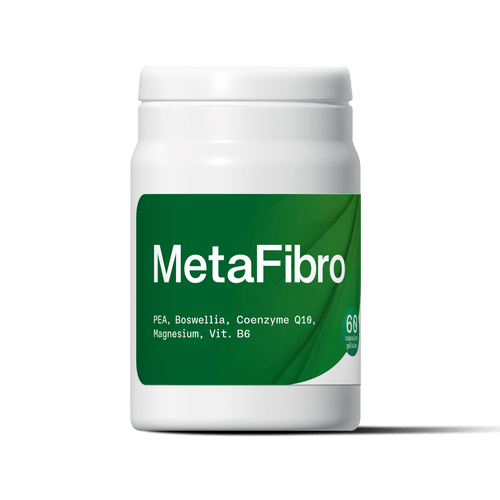En Belgique, nous sommes 11 millions de producteurs de cannabinoïdes! Les endocannabinoïdes, ceux produits par notre corps...
Le corps humain produit lui aussi des cannabinoïdes, ces mêmes molécules produites par la plante de cannabis.
La plante de chanvre produit des phytocannabinoïdes, comme le THC, le CBD, ... Le corps humain lui produit ce que l'on appelle des endocannabinoïdes.
Qu'est-ce qu'un endocannabinoïde ?
Le mot Endocannabinoïde est dérivé du mot grec ἔνδον"(éndon) qui signifie "à l'intérieur" et de cannabinoïde, ces molécules qui peuvent se lier avec les récepteurs cannabinoïdes.
Les endocannabinoïdes sont des molécules de « signalisation » synthétisées par l'organisme pour activer le système endocannabinoïde. Ces neurotransmetteurs se lient aux récepteurs cannabinoïdes présents dans l'ensemble du système nerveux périphérique et du système nerveux central des vertébrés, les récepteurs du dit système endocannabinoïde.

Types d'endocannabinoïdes
Le Dr Raphael Mechoulam a isolé deux types d'endocannabinoïdes dans le corps humain
1. Anandamide : Arachidonoylethanolamide (AEA)
2. 2-AG :2-arachidonoylglycérol
Ces 2-AG et Anandamide sont des molécules de signalisation rétrograde, c'est-à-dire qu'elles voyagent à l'opposé des autres neurotransmetteurs : d'un neurone postsynaptique vers les neurones présynaptiques. Ces neurotransmetteurs ont une grande influence sur le sommeil, la mémoire, l'humeur, l'apprentissage et l'appétit.
Le Dr Mechoulam a nommé l'anandamide d'après le mot sanskritananda, qui signifie "félicité, bonheur et joie", car il s'agit d'un stimulant de l'humeur. Ensuite, l'anandamide produit un effet similaire à celui du THC lorsqu'elle se lie aux récepteurs cannabinoïdes.
L'anandamide est par ailleurs un ingrédient important du chocolat et est responsable de la sensation de plaisir que nous ressentons lorsque nous en mangeons.
Le 2-arachidonoylglycérol est le principal cannabinoïde endogène qui se lie aux récepteurs CB1 et CB2 du système nerveux central.
Comment les endocannabinoïdes sont-ils produits ?
Les endocannabinoïdes sont produits à la demande dans les neurones postsynaptiques.
Les deux endocannabinoïdes sont des molécules à base de graisses.
Après s'être liés aux sites récepteurs spécifiques, ils sont rapidement dégradés par des enzymes particulières.

Comment les endocannabinoïdes agissent-ils dans notre organisme ?
Comme les autres cannabinoïdes, les Endocannabinoïdes interagissent avec l'organisme en tant qu'agonistes ou antagonistes sur les récepteurs spécifiques (CB2 et CB1) situés dans le système endocannabinoïde. C'est comme un système de serrures et de clés où les cannabinoïdes agissent comme des clés et les récepteurs cannabinoïdes agissent comme une serrure.
Notre système endocannabinoïde agit comme un mécanisme d'équilibrage et régule l'équilibre lorsqu'il détecte un problème dans l'organisme. De même, il active les cannabinoïdes comme des outils, et notrecorps produit des endocannabinoïdes lorsque nous en avons besoin pour l'homéostasie.
Que sont les phytocannabinoïdes ?
Parfois, le système auto-immunitaire de l'organisme ne soutient pas le fonctionnement du corps, comme dans les maladies auto-immunes, lorsque le système immunitaire attaque les organes ou les tissus sains. De même, lorsque le corps manque d'endocannabinoïdes, il peut obtenir des cannabinoïdes à partir d'une source externe.
Les phytocannabinoïdes sont des terpénoïdes bioactifs synthétisés principalement à partir de la plante de chanvre Cannabis Sativa. Ils ont en effet été découverts également dans des espèces de rhododendrons, de certaines légumineuses ou encore des champignons.
Le mot Phyto signifie "De plantes ou à base de plantes". Près de plus de 100 phytocannabinoïdes ont été découverts dans la plante de cannabis et de chanvre.
Bien qu'il soit présent dans toute la plante, il présente une concentration plus élevée dans la structure glandulaire visqueuse de la plante connue sous le nom de trichomes.
Types de phytocannabinoïdes
Le phytocannabinoïdes d'origine végétale le splus courant est le cannabidiol (CBD) et le tétrahydrocannabinol (THC). D'autres cannabinoïdes neutres importants sont
- CBDV : Cannabidivarine
- CBGV : Cannabigérivarine
- CBC : Cannabichromène
- CBN : Cannabinol
- THCV : Tétrahydrocannabivarine
- CBCV : Cannabichromevarin
- CBG : Cannabigérol
Les phytocannabinoïdes acides sont :
- THCA : acide Δ9-tétrahydrocannabinolique
- CBGA : acide cannabigérolique
- CBCA : Acide cannabichroménique
- THCVA : acide tétrahydrocanabivarique
- CBDA : Acide cannabidiolique
- CBDVA : Acide cannabidivarique
- CBGVA : Acide cannabigérovarique
- CBCVA : Acide cannabichromevarinique
Le "A" à la fin signifie acides 2-carboxyliques

En quoi les 2 types de cannabinoïdes diffèrent-ils l'un de l'autre ?
Les phytocannabinoïdes et les endocannabinoïdes diffèrent les uns des autres par leurs origines. Les phytocannabinoïdes sont dérivés des plantes, tandis que les endocannabinoïdes sont situés dans le corps des mammifères, comme le préfixe Endo signifie nature endogène, tandis que Phyto signifie dérivé des plantes.




